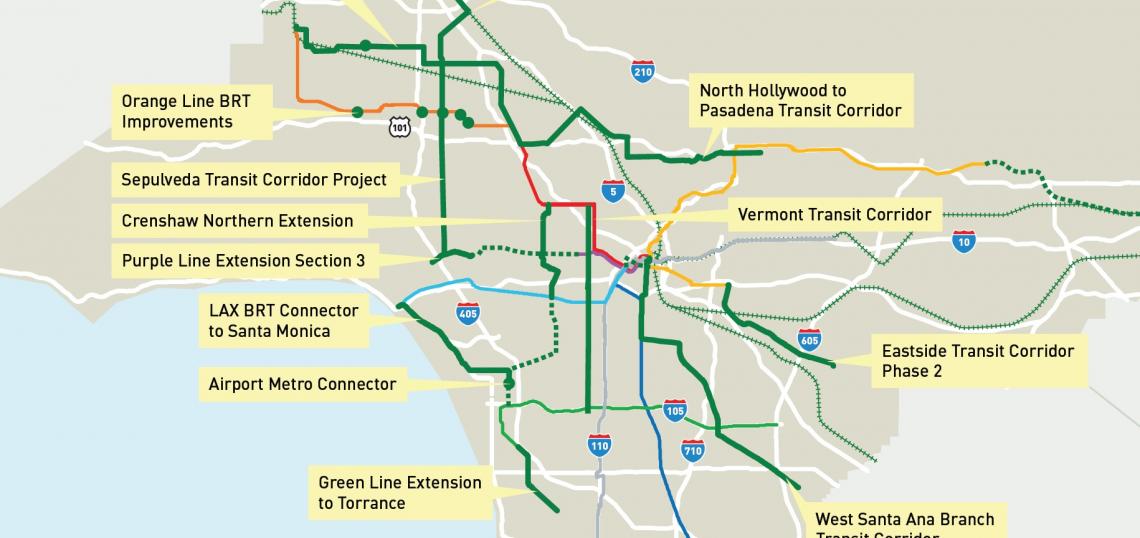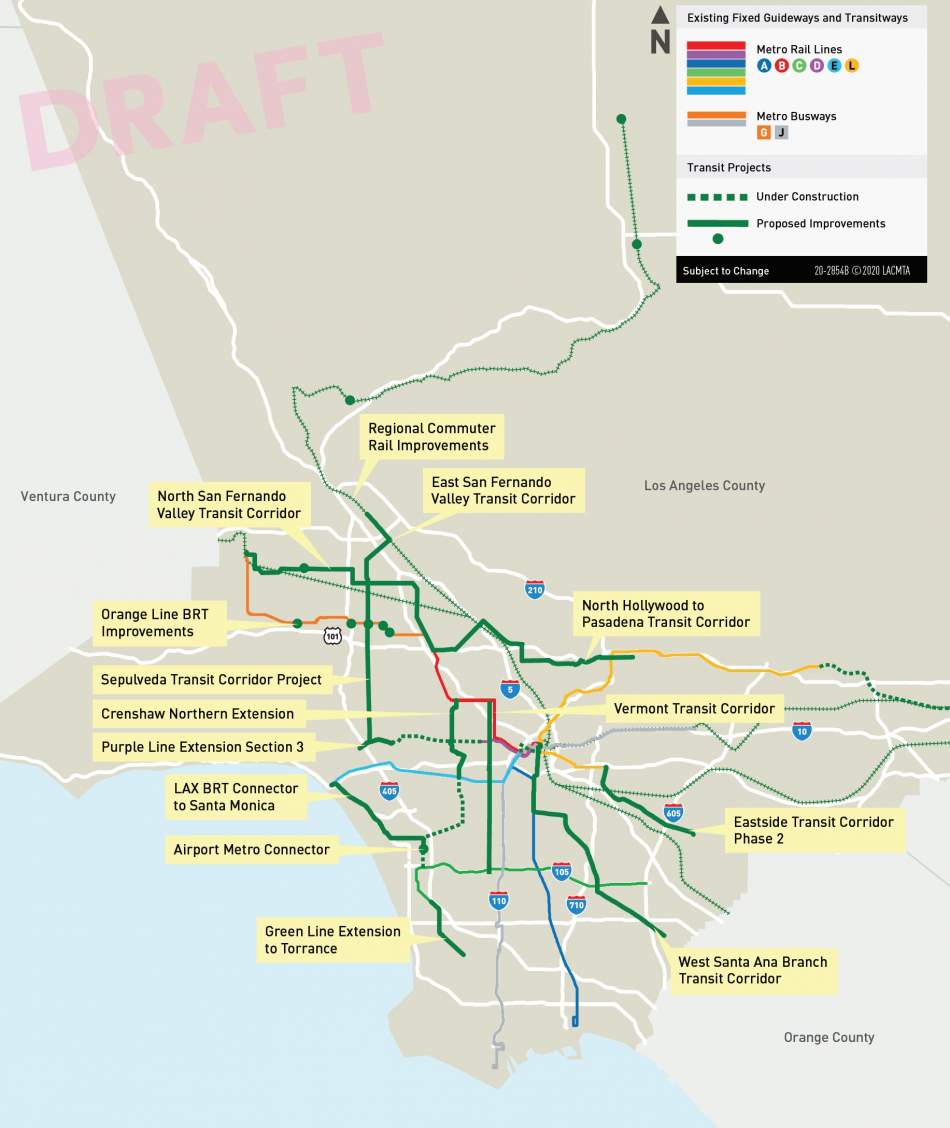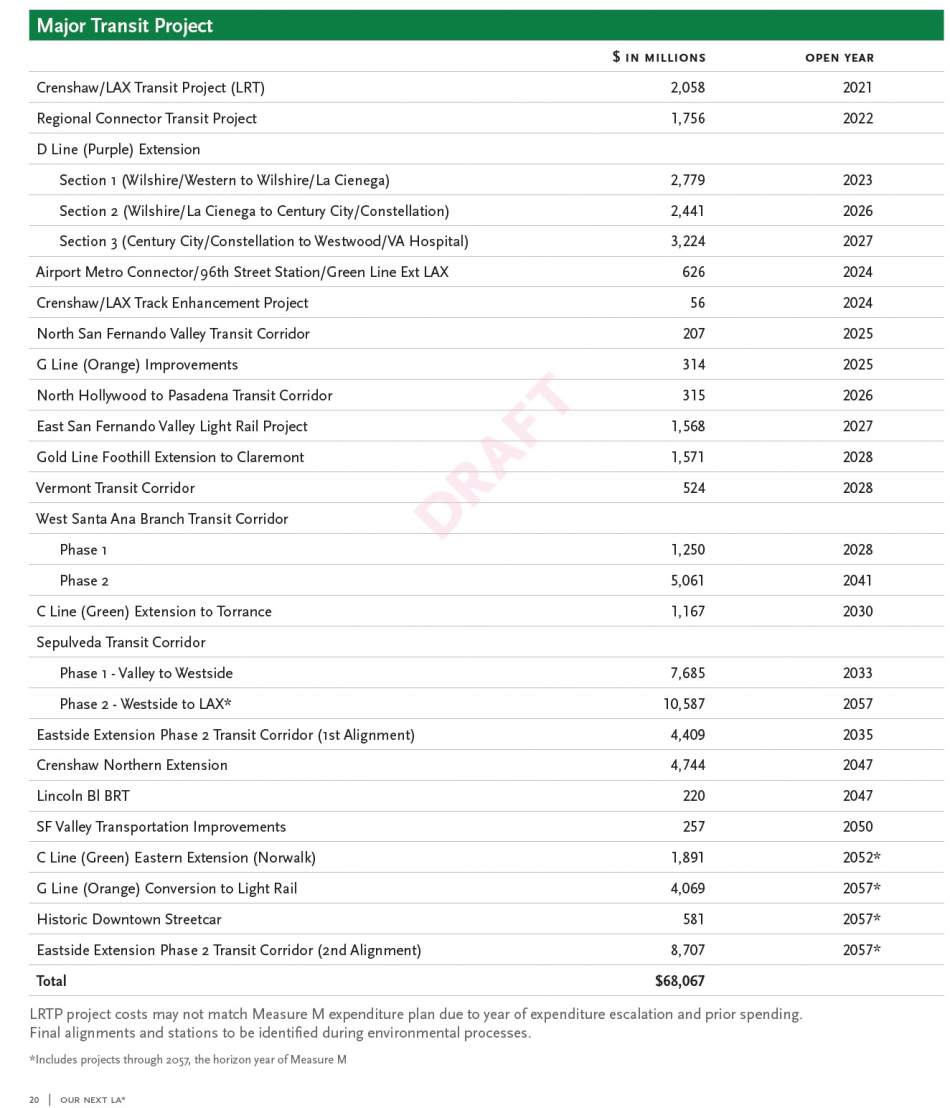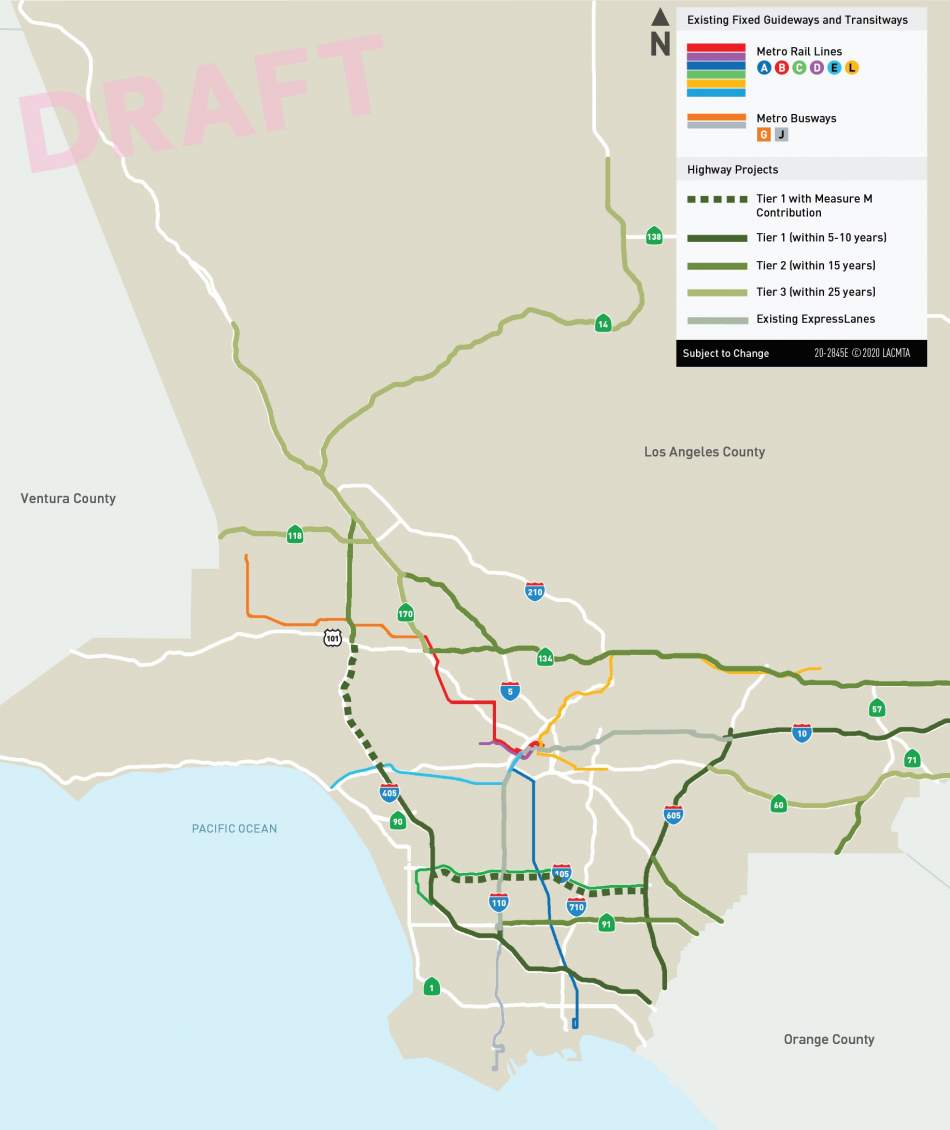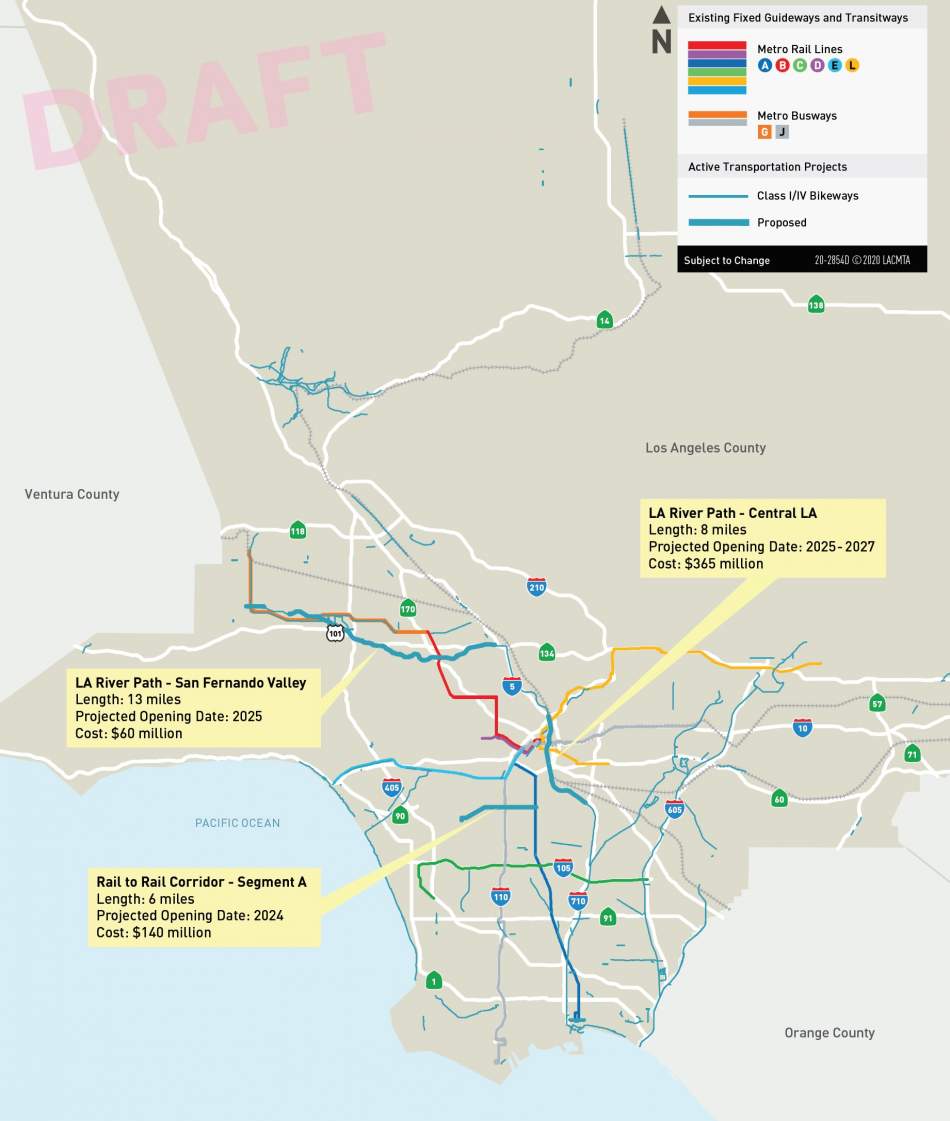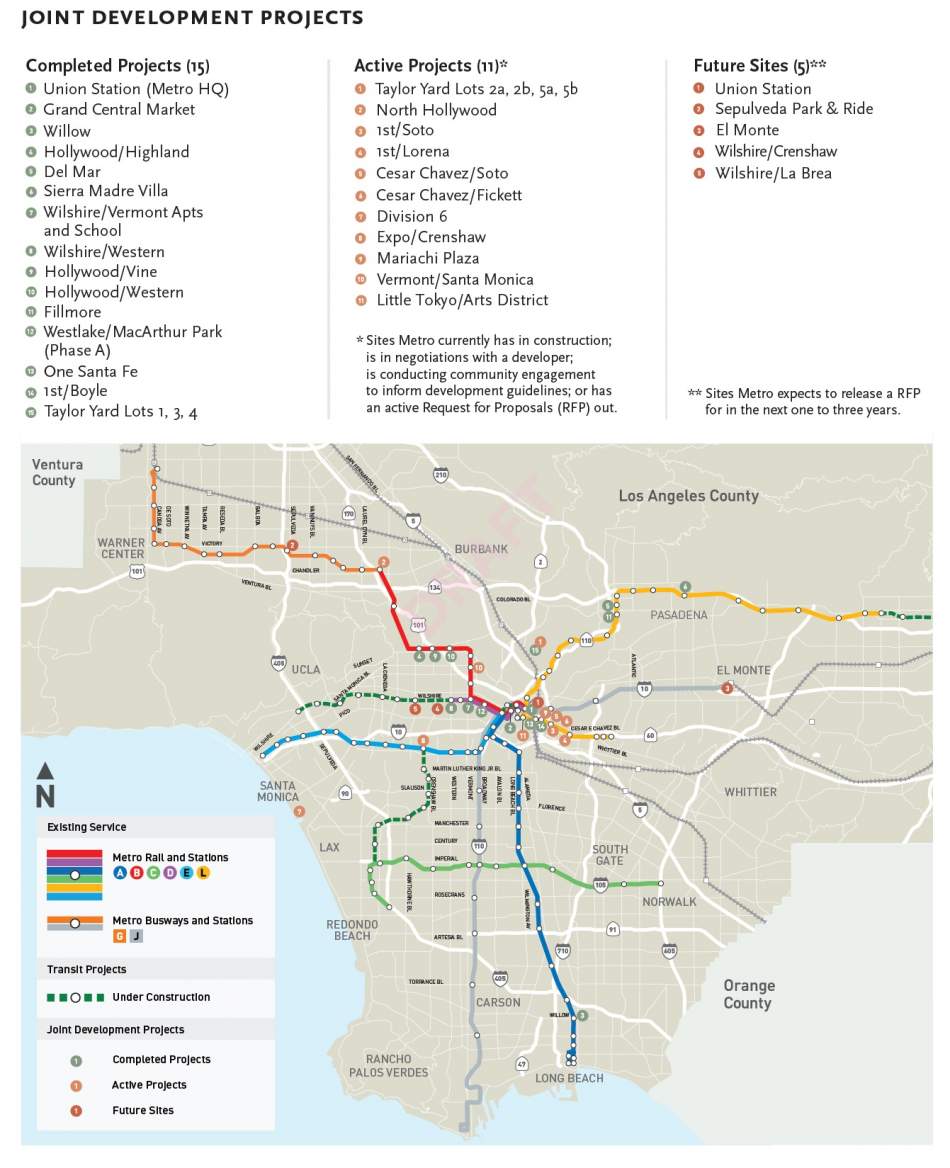In May, Metro's Board of Directors voted to release a draft of the 2020 long range transportation plan (LRTP), outlining how the agency intends to spend $400 billion on transportation in Los Angeles County over the next 30 years.
The 76-page document, entitled Our Next LA, is based on anticipated population and employment growth in the Greater Los Angeles area - including up to 1.7 million new residents and 1 million new jobs through the year 2047. Metro hopes to capitalize on an expanding population in the three decades by increasing the number of transit trips per capita, while simultaneously decreasing the region's vehicle hours of delay and greenhouse gas emissions.
Metro anticipates that nearly half of its plan will be funded by Los Angeles County sales tax revenue, with the remainder pieced together from State, Federal, and other local sources.
As in prior iterations of the LRTP, investment in new and expanded transit lines is a cornerstone of the draft 2020 plan. In total, more than $66 billion in projects are scheduled for completion through 2057, including:
Additional capital projects that are not listed include the Union Station master plan, which would add new run-through tracks and an expanded passenger concourse to the historic transit hub, as well as Metrolink's SCORE program, which calls for $10-billion in capital improvements to the more than 500-mile commuter rail network.
New construction would be complemented by planned revamps to the existing transit network, including the NextGen Bus Plan - which aims to boost service frequency and ridership - and the implementation of bus-only lanes on key corridors such as Flower Street, 5th Street, 6th Street, Grand Avenue, and Olive Street.
The 2020 plan also calls for enabling easier payment of fares - expanding TAP integration across the region - and improving the customer experience by addressing longstanding issues such as station amenities, disabled access, and addressing the experience of women on transit.
The ongoing discussion over safety on Metro's buses and trains also dovetails with recent moves towards reworking how law enforcement will interact with transit passengers.
Metro's 2020 LRTP also lays the groundwork for over $22 billion in highway projects, including various widening projects and improvements to freeway interchanges. The document also addresses Metro's strategic plan for goods movement in Los Angeles County, as well as its ongoing traffic reduction study - formerly dubbed the congestion pricing feasibility study - which aims to reduce vehicular traffic congestion in the region.
Many elements of congestion pricing are already encompassed by the County's fledgling ExpressLanes network, which is currently limited to segments of the I-10 and I-110 Freeways. The approval of Measure M in 2016 provided funding for an expansion of the ExpressLanes program to the I-105 and I-405 Freeways.
According to the LRTP, the network could later be expanded to portions of the 134, 170, 118, 14, 60, 91, and 605 Freeways.
The 2020 LRTP also includes proposed active transportation projects - including the Rail-to-River corridor and the Los Angeles River bike path - as well as the agency's suite of joint developments.
As of 2020, Metro has completed 15 joint development projects, and is either in the planning or construction stages for 11 additional developments. Six future sites - including Union Station, Wilshire/La Brea, El Monte, and Wilshire/Crenshaw - are expected to follow in the coming three years.
Metro anticipates that the 2020 LRTP will increase the regional gross domestic product by $196 billion and account for 1.84 million jobs.
The document is available for public comment through July 13 at OurNext.LA.




